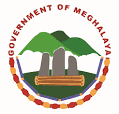Education in Meghalaya
The history of formal education in Meghalaya has been a recent one commencing with the formulation of a Khasi Alphabet in 1842 by Rev Thomas Jones, a Welsh missionary. Similarly for the Garo Hills, a Garo Alphabet was evolved in 1902 by American missionaries using the Roman script.Thus the Christian missionaries were the first to start modern education in the Khasi, Jaintia and Garo Hills. With requirements for a literate society not being high in colonial times, only a few elementary schools were functioning in what is now known as Meghalaya.
The first college was established in Shillong only in 1924 by the Christian Brothers of Ireland. Being a hill station blessed with bracing weather and having a strong colonial influence, several quality colleges and public schools have been established over the years. The alumni of these schools is spread all over the country and their footprints are also found all over the world. Some of them hold very distinguished positions and occupy high offices in foreign countries, as well.
Shillong has also been a favourite retreat of well known intellectuals and luminaries and in particular, Nobel Laureates like Rabindranath Tagore and Dr. C.V. Raman. This historical legacy coupled with an enabling environment has been instrumental in the state being able to host several National Institutes of repute like the North Eastern Hill University which is a Central University, The North Eastern Indira Gandhi Regional Institute of Health & Medical Science (NEIGRIMS), the Indian Institute of Management (IIM), National Institute of Fashion Design (NIFT), Indian Institute of Hotel Management, Central Institute of English & Foreign Languages (CIEFL) and various other prominent institutes of higher Learning. A new National Institute of Technology is also being set up in the world famous Sohra (Cherrapunji) town. Six private universities have also been permitted to open their campuses in the state. One little known feature in the State's education scenario is the large number of out of state students who contribute significantly not only to the vibrancy and cosmopolitan nature of the student community but also to the State's Domestic Product figures. Another even lesser known fact is that in the seventies Shillong attracted students from South East Asia like Thailand and Malaysia who undertook graduate courses in the prestigious colleges of St.Edmunds and St.Anthonys. Presently the Government of Meghalaya is making efforts to attract Thai students to take up schooling in the English Medium Schools in Shillong. This will make Shillong a prized destination for education.
Meghalaya is perhaps the first state in the region to adopt a 'communitisation' model of education at the elementary levels. All the school managing committees, whether government or government aided, include heads of traditional institutions and prominent citizens Despite the slow start in the education front, literacy rates of the state have seen an exponential rise from 26.92% in 1961 to 74.43% in 2011. With the implementation of flagship programmes like SSA, RMSA and RUSA the educational profile of the state is expected to improve further. The Education Department is also presently gearing up to meet the challenges of Human Resource Development in the light of the Right to Free & Compulsory Education(RTE), 2009 to foster a conducive climate for the development of the much required critical mass, which is expected to contribute significantly to the state and the nation's growth and development. Efforts are also on to develop the existing institutions as cradles of potential excellence. Apart from resources drawn from Central and State Budgets, the Department of Education is also drawing up strategies to generate resources from other areas as well.




